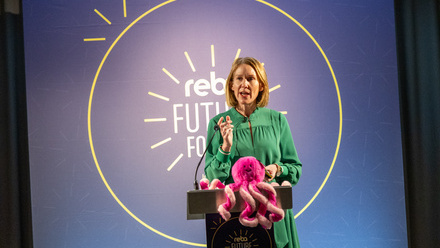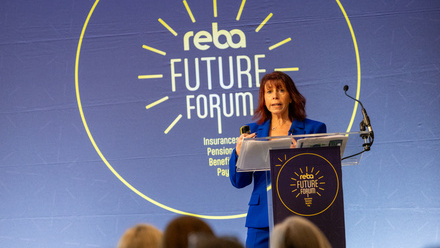What employers can do to help close pay and childcare cost gaps – and keep talent
Given the high cost of living, and with energy prices about to rise again, it is worth bearing in mind that employers can support employees’ childcare costs through a nursery partnership in a way that can be cost-neutral for the employer itself.
The Early Years sector itself had a boost this month when Bright Horizons announced a £10m investment in recruitment, retention and training of early years educators that will help front-line workers as well as elevating the profession. This is a significant investment given the much-reported issue of government funding challenges.
The 'shift shock'
A report by the Pew Research Centre involving more than 6,000 non-retired US adults, shows workers quit due to dissatisfaction with pay, opportunities, lack of respect, childcare issues, or wish for greater flexibility in hours as their top five reasons.
However, research by The Muse suggests the grass is not always greener. For 72% in their survey of 2,500 there was the issue of ‘shift shock’, in which the new job did not turn out to be all it promised. This could imply real scope for employers to sing louder about their culture, benefits and mission, ensuring talented workers do not wander off only to be disappointed elsewhere.
Designing the future of work
For employers still consulting to ensure hybrid working is inclusive, you are not alone: we had a lively discussion on gender equity with Norton Rose Fulbright and EDF Renewables as part of HR Grapevine Live. During an audience poll, over two-thirds (68%) said they were still planning or consulting on what is needed for inclusive hybrid working.
As we design the future of work, bear in mind Business in the Community (BITC) and IPSOS report which highlights that in a survey of more than 5,000 people, 58% said caring responsibilities – for children or adults – had stopped them seeking a promotion or new role and nearly three in 10 (28%) had left a job because it was too hard to balance work and care. The BITC/IPSOS research further revealed that women and ethnic minorities shoulder the highest impact of caring responsibilities.
Time for transparency
Between the flurry of commitments made and reaffirmed on International Women’s Day (IWD) and the impending Gender Pay Gap (GPG) reporting deadlines, this is a season to scrutinse gender parity. We saw the Twitter Gender Pay Gap Bot call out the GPG of any employer daring to post a celebratory message for IWD. The flaw in this device is its implication that having a gender pay gap means the same as providing unequal pay for the same role. In fact, it mostly means women are occupying the lower-paid roles in an organisation. Of course we should ask as a nation how we progress more women to the higher earning roles and how we encourage men to take up more of the lower-earning front-line roles in some sectors.
Employers making commitments to gender equity are talking about social change and the removal of systemic barriers, which takes time, especially when each year’s report is a snapshot of the previous March or April. Bright Horizons will be partnering with HRreview in a webinar on 28th April to unpick the pay gap.
The gender gap is reinforced during hiring when employers ask about salary history. This can pin women, and some minority groups, to a pattern of lower earnings even when moving to a senior role. On IWD, the Minister for Women launched a programme with a pilot group of employers to improve pay transparency in recruitment by including salary details on job adverts and not asking about salary history.
Not all pay gaps get equal treatment
There will not, after all, be compulsory Ethnicity pay gap reporting at this time, the government has confirmed. Guidance for voluntary reporting will instead be issued. One of the perceived hurdles to ethnicity pay gap reporting is the absurdity of a binary comparison of one group with one other, in this case positioning all ‘white’ employees alongside all ‘other ethnic groups’ which seems insensitive and irrational, just like the umbrella term BAME, which is falling out of use.
As we know, it is already artificial enough treating gender as binary for reporting; it is much more nuanced again for ethnicity. Many employers will continue with voluntary reporting as the need to fix barriers to progression is surely greater than any challenge in reporting.
Supplied by REBA Associate Member, Bright Horizons Work+Family Solutions
Bright Horizons is dedicated to providing the best in class work+family solutions.








